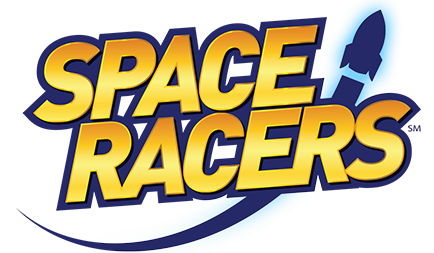
Overview: In this hands-on lesson, students learn the names of the planets in the solar system and play a fun game where they learn the order of the planets.
Grades: Preschool and K-2
Length of Lesson: 30 – 45 minutes
Learning Goals:
After completing this lesson, students will be able to:
- Name the planets in the solar system.
- Identify the correct order of the planets and sun.
Related Goals from the Space RacersTM Curriculum:
Key Facts about Space and Space Exploration / The Sun:
- The Sun is bigger than the Earth; it is the biggest object in the solar system.
Planets:
- There are eight planets in our solar system.
- Names of planets. (Mercury, Venus, Earth, Mars, Jupiter, Saturn, Uranus and Neptune.)
- Planets travel around the Sun.
- Planets are shaped like a round ball.
- Defining characteristics of planets.
- Positions of planets relative to one another.
The Solar System:
- The solar system consists of the Sun and everything that travels around it (i.e., all the planets, moons, comets, asteroids, dust, gas, etc.).
Materials:
- Solar System Cards
- Sun and Planets Matching Game (optional)
- tape (optional)
- playdough (optional)
Prep:
- Print out each of the cards in the “Solar System Cards” handout, so that each image is on a separate sheet of paper.
- Optional: Print out the “Sun and Planets Matching Game” and cut out each of the cards in the game.
Lesson Activities:
Activity 1:
- Tell your students that today you will be talking about the solar system. Ask if they know what the solar system is. Explain that it is the sun and all the planets that move around it.
- Ask your students to name any planets they know. Ask them to name the planet we all live on.
- Show your students “The Solar System” image in the “Solar System Cards” handout and ask them to point to the sun.
- With your students, count the number of planets.
- Point to each planet, saying the name of each one as you point to it.
- Show each of the separate cards (with one object per card). Read the name of the object as you show it.
- Then show the solar system map again and review the name of each planet in order from the sun to Neptune.
- Ask students to name the planet closest to the sun. (Mercury.) Ask them to name the planet furthest from the sun. (Neptune.)
Activity 2:
- Mix up the order of the cards. Pick 9 volunteers from the class and give each one a planet/sun card. (Have the students hold their cards or tape them to the front or back of their shirts.)
- Put “The Solar System” image in front of the class and ask the rest of the students to help put the students with cards in the correct order, going from the sun to Neptune.
- After the students have correctly put their classmates in the correct order, collect the signs, mix them up again and repeat the activity, with new students as the planets.
- Repeat the activity several times until all students have had a chance to be in the solar system.
Optional Activities:
- Give students playdough. Ask them to create their own planets and/or sun. After they have created their planets, ask them to describe their works of art.
- Shuffle the cards from the “Sun and Planets Matching Game” and place them face down on a flat surface. Have students work in groups of 3-4 to play the game. Have students turn the cards face down and then, turning two cards over at a time, try to match the planets. (See directions on the “Sun and Planets Matching Game” handout for more details.)
Wrap-up
- Holding up “The Solar System” image from the “Solar System Cards” handout, ask students what they think is the largest object in the solar system (the sun). Ask students which is the biggest planet (Jupiter) and which is the smallest planet (Mercury). Ask students to point out the planet with the biggest rings (Saturn).
- Lead a discussion about the planets and ask students to make some observations about the planets, based on The Solar System image. (What shape are the planets? Which ones have rings?)
